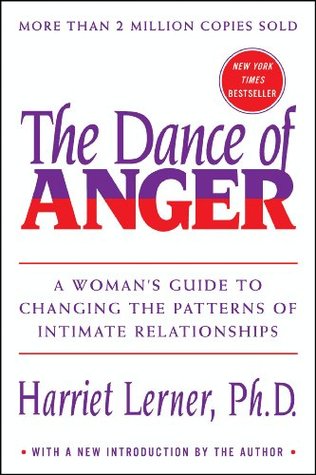More on this book
Community
Kindle Notes & Highlights
Read between
November 3 - November 18, 2020
Anger is neither legitimate nor illegitimate, meaningful nor pointless. Anger simply is. To ask, “Is my anger legitimate?” is similar to asking, “Do I have a right to be thirsty?
How Does One Make Use of This Book? Very slowly. No matter how crazy or self-defeating our current behavior appears to be, it exists for a reason and may serve a positive and protective function for ourselves or others.
There are few things more anxiety-arousing than shifting to a higher level of self-assertion and separateness in an important relationship and maintaining this position despite the countermoves of the other person.
Doing the “feeling work,” like cleaning up, has long been defined as “woman’s work,” and lots of women are good at it. As with cleaning up, men will not begin to do their share until women no longer do it for them.
If we feel chronically angry or bitter in an important relationship, this is a signal that too much of the self has been compromised and we are uncertain about what new position to take or what options we have available to us. To recognize our lack of clarity is not a weakness but an opportunity, a challenge, and a strength.
Or we have been taught to substitute other questions: “How can I please others?” “How can I win love and approval?” “How can I keep the peace?” We suffer most when we fail to grapple with the “Who am I?” questions and when we deny feeling the anger that signals that such questions are there for us to consider.
Diagnosing the other person is a favorite pastime for most of us when stress is high. Although it can reflect a wish to provide a truly helpful insight, more often it is a subtle form of blaming and one-upmanship. When we diagnose, we assume that we can know what another person really thinks, feels, or wants, or how the other person should think, feel, or behave. But we can’t know these things for sure. It is difficult enough to know these things about our own selves.
If, however, we do not use our anger to define ourselves clearly in every important relationship we are in—and manage our feelings as they arise—no one else will assume this responsibility for us.
We cannot not influence a relationship pattern. Once a relationship is locked into a circular pattern, the whole cycle will change when one person takes the responsibility for changing her or his own part in the sequence.
Although no one has died from sulking yet, women, the emotional rescuers of the world, can have a terribly difficult time allowing others just to sit with their feelings and learn to handle them.
In ongoing battles of this sort, the single most important factor is not whether we fight or not, or whether our voice is raised or calm; it is the growing inner conviction that we can no longer continue to overfunction (in Lisa’s case, on the domestic scene), for our own sake.
“What’s wrong with me?” and/or “What’s wrong with this child?” are the two questions mothers learn to ask themselves as they are handed over the primary responsibility for all family problems.
With children, as with adults, change comes about when we stop trying to shape up the other person and begin to observe patterns and find new options for our own behavior.
When we feel angry, we tend to see people rather than patterns as the problem.


